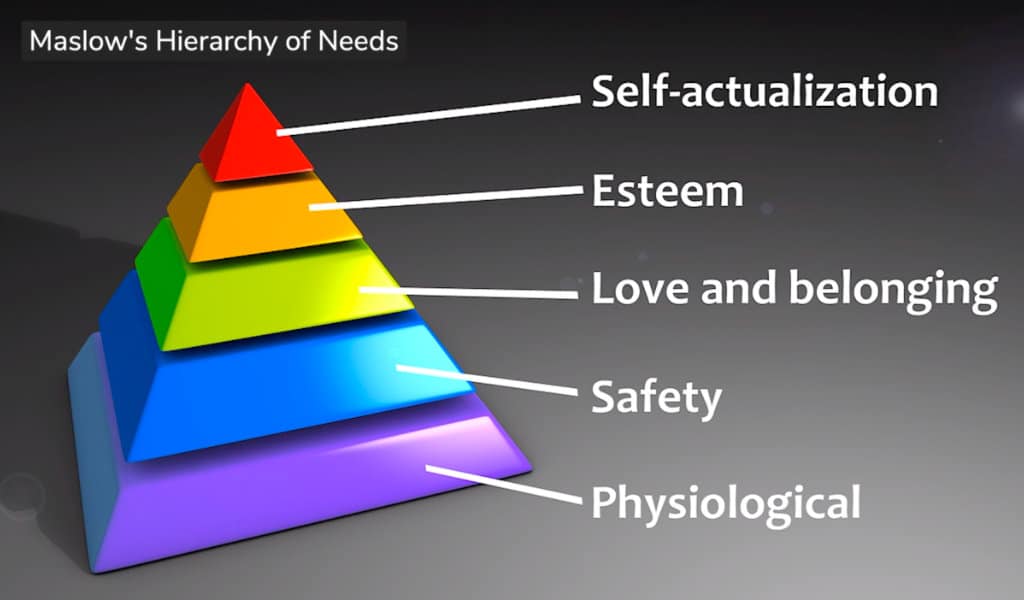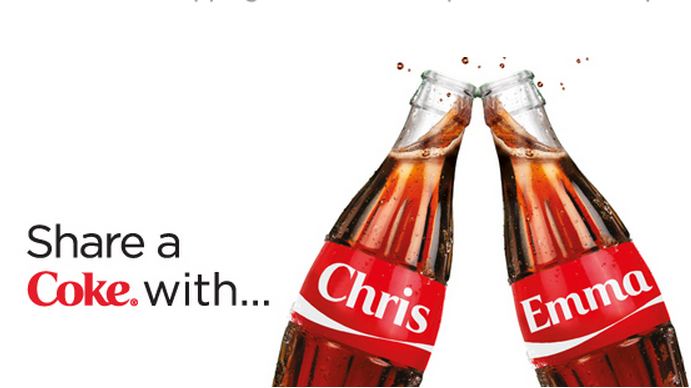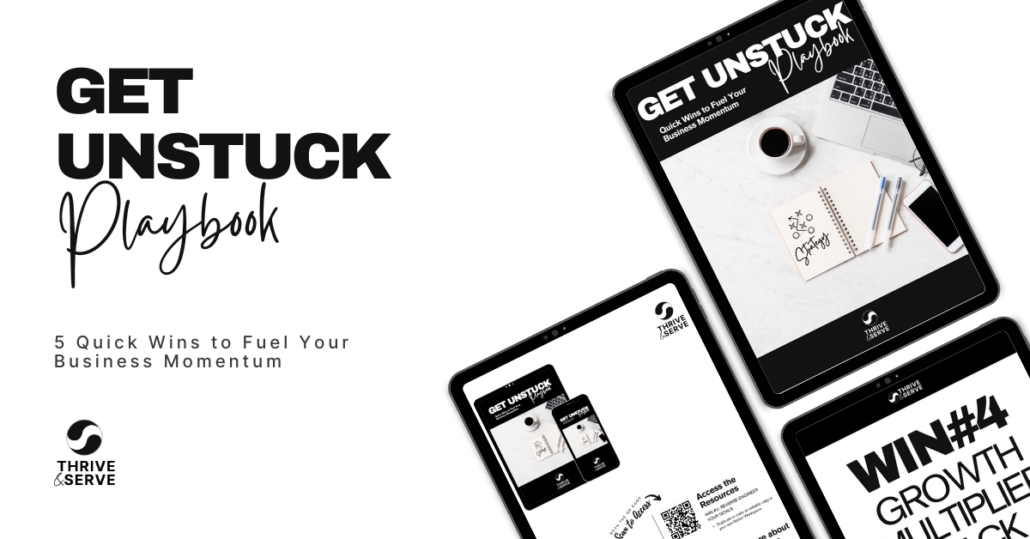"Marketing isn't just about selling a product. It's about captivating people's hearts and minds."
Guy Kawasaki
Have you ever wondered why some ads stick with you long after seeing them, tugging at your heartstrings or sparking joy? Emotional marketing at work is a strategy that goes beyond just selling a product to creating memorable, meaningful connections. In today’s fast-paced world, where we are bombarded with information, standing out requires tapping into your audience's emotional core. You capture attention and foster loyalty and trust by weaving emotions into your marketing efforts. This post will guide you through harnessing the power of emotions to make your brand unforgettable. Ready to connect with your customers on a deeper level?
Key Takeaways
- Emotional marketing taps into feelings to make your message more memorable and impactful. Start by understanding the basics of how emotions drive consumer behavior.
- Connecting with your audience emotionally is crucial to enhancing engagement and loyalty. Examine the benefits and psychological principles behind emotional marketing to see why it works.
- Use different emotions, like happiness, sadness, or fear, wisely in your marketing strategies. Each can play a unique role in attracting and retaining customers.
- Implement emotional marketing by crafting messages that resonate with your audience's feelings and values. This approach can significantly boost the effectiveness of your marketing.
- Learn from real-world examples of successful emotional marketing campaigns. They show how powerful this technique can be when done right.
- Always measure the impact of your emotional marketing efforts. This data will help refine your strategies and better understand your audience's emotional triggers.
Understanding Emotional Marketing Basics
Emotional Connection
Emotional marketing taps into your feelings, aiming to create a deep bond between you and a brand. It's not just about selling a product; it's about telling a story that resonates with your experiences and emotions. This approach can make you feel seen, understood, and connected to a brand on a level beyond just the goods or services they offer.
Brands use emotional marketing to stand out in a crowded market. They craft messages that speak directly to your heart, making their campaigns memorable and impactful. When done right, this strategy can turn your audience into loyal advocates who strongly relate to the brand.
Storytelling Power
Storytelling is a cornerstone of emotional marketing. It's the vehicle brands use to deliver messages that stir up feelings of joy, nostalgia, empathy, or even sadness. Good stories are relatable and immersive, pulling you into a narrative highlighting shared human experiences.
These narratives often feature real-life scenarios or challenges you might face, making it easy to see yourself in the story. By weaving these tales, you can evoke powerful emotions that forge lasting memories and associations with your products or services.
Emotional Triggers
Understanding emotional triggers is crucial in understanding how to influence decision-making. These triggers can be anything from the desire for acceptance and belonging to the fear of missing out (FOMO). They significantly influence how you perceive value, driving impulse purchases and long-term brand loyalty.
For instance, an ad highlighting family connections during the holidays might tap into your longing for warmth and closeness with loved ones. This emotional response makes you more inclined to purchase from a brand that understands and shares your values.
Benefits of Emotional Marketing Explored
Brand Recall
When you tap into emotional marketing, brand recall skyrockets, it's simple: People remember how you make them feel more than the specifics of what you sell. By linking your product features to emotions, your clients will be more likely to recall your brand when they need what you offer. Marketers obsess over being ‘top of mind.’
They won't just remember the product; they'll remember the story and associated feelings. This is crucial in today's fast-paced world, where consumers are bombarded with countless brands daily.
Customer Loyalty
Emotional connections foster deep client loyalty. When your audience feels understood and valued emotionally, they strongly bond with your brand. This isn't about one-time purchases but creating a lifetime value that benefits both parties.
Clients loyal to a brand will continue to buy and advocate for your brand, recommending it to friends and family. They trust your brand because they've connected with it on a deeper level than just the transactional. This is important, and delivering powerful transformations for those you serve naturally fosters this.
Competitive Edge
In crowded marketplaces, standing out is key. Emotional marketing can provide that competitive advantage and unique positioning. It moves beyond comparing product features and prices. Instead, it focuses on how your products make customers feel.
This approach can set you apart from competitors who may offer similar products but lack the emotional connection with their audience. Customers often choose products based on need and which brand resonates with them emotionally. Emotional connection is very personal. Once the connection is made with you/your brand, it is difficult for competitors to break into this. This is natural human behavior. Think of the bond you have with a loved one. A stranger could never walk into your life and replace that bond. Although not to the same extreme, the same emotional and psychological factors are at play here.
Psychological Principles Behind Emotional Marketing
Maslow's Hierarchy of Needs

Understanding how emotional motivators work is key to applying emotional marketing effectively. One foundational concept is Maslow's hierarchy of needs. This theory suggests that humans have five levels of needs: physiological, safety, love/belonging, esteem, and self-actualization.
Marketers can tap into these needs to create an emotional pull. For instance, a brand promoting safety products might focus on the second level of Maslow's hierarchy by emphasizing security and protection in its messaging. This approach directly appeals to the need for safety, strengthening the emotional connection.
Color Psychology
Colors play a significant role in influencing emotions and purchasing behavior. Each color can evoke different feelings and reactions. Red, for example, often signifies excitement or passion, which can be used to grab attention or encourage impulse buying. It can also be perceived as a danger, eliciting a fear response, so use these things carefully.
On the other hand, blue can create a sense of trust and security, often used by banks and tech companies. Green is calming and soothing, so we see it used by eco and sustainability brands. By understanding the psychological effects of colors, you can craft marketing materials that resonate emotionally, enhancing your campaigns' effectiveness.
Music Influence
Music also has a profound impact on emotions and decision-making processes. It can set the mood and tone of an advertisement or store environment, influencing how you feel about a brand or product.
Fast-paced music might increase energy levels and encourage quicker decision-making in a retail setting. I get stressed in the build-up to Christmas when stores play fast-paced Christmas songs that create panic and a sense of urgency. In contrast, softer music can create a relaxing atmosphere, making you spend more time browsing. Selecting the right music aligns with your target audience's emotions and preferences, significantly boosting sales.
Emotional Contagion
The principle of emotional contagion explains how emotions can spread from person to person like a virus. This concept is particularly useful in viral marketing campaigns where brands aim to create content that viewers will share widely due to its emotional impact.
Leveraging Different Emotions in Marketing
Core Emotions
Understanding core emotions like happiness, sadness, fear, and surprise is crucial for creating impactful marketing campaigns. Each emotion plays a unique role in how consumers relate to your brand.
Happiness often leads to sharing. When people feel happy, they're more likely to share content with others. This means using humor can make your brand more memorable and increase brand awareness. For instance, brands use funny ads to stand out in the market. These ads get discussed and shared across social media, expanding the brand's reach.
Sadness, on the other hand, can create a deep connection. It makes stories stickier because people remember how you made them feel. Marketers use this emotion to tell moving stories that evoke empathy. This strategy can inspire people to take action, such as donating to a cause.
Humor in Marketing
Humor is a powerful tool in marketing. It not only captures attention but also makes your message more relatable.
Brands that master humor create content that's seen, remembered, and shared. Think of the last time you laughed at an ad and told someone about it. That's the power of humor at work. By incorporating jokes or funny scenarios into your marketing materials, you can boost engagement and help your message spread far and wide.
Fear Appeals
Fear-based appeals can be effective, especially in public service announcements and health-related products.
This approach makes people stop and think about their choices by highlighting potential negative outcomes. For example, anti-smoking campaigns show the harsh realities of lung disease to encourage smokers to quit. Similarly, safety gear brands might showcase accidents to underline the importance of wearing protective equipment.
However, balancing fear with actionable advice is vital so your audience feels empowered rather than helpless.
Top Strategies for Mastering Emotional Marketing
Authentic Content
Creating authentic and relatable content is crucial. Your audience seeks stories in which they can see themselves. This connection fosters trust and loyalty.
Start by understanding your audience's desires and challenges. Then, craft messages that speak directly to these points. It’s not just about selling a product; it’s about offering solutions that resonate on a personal level.
Authenticity also means being consistent across all platforms. Your tone and message should align whether you post on social media, send emails, or run ad campaigns.
Social Proof
Leverage social proof to build credibility. People trust others like themselves more than they do advertisements.
Incorporate user-generated content (UGC) into your strategy. Share customer testimonials, reviews, and stories across your marketing channels. Seeing real people endorse your brand has a powerful emotional pull.
Another form of social proof is influencer partnerships. Collaborate with influencers who share your brand values and have an engaged following that matches your target audience.
Timing & Context
Understanding the importance of timing can significantly amplify the emotional impact of your messages—launch campaigns when your audience is most receptive.
For instance, aligning with cultural or seasonal events can make your message more relevant and engaging. A heartfelt campaign during the holiday season can evoke strong emotions of joy and generosity.
Also, consider the current global context. During challenging times, messages of hope and solidarity can resonate deeply with audiences seeking comfort and community.
Implementing Emotional Marketing Effectively
Audience Research
You must dive deep into understanding your audience. This involves thorough research to uncover their emotional triggers and preferences. It's not just about what they need but how they feel about those needs. Such insights can transform your marketing from merely informative to deeply resonant.
Knowing your audience allows you to craft messages that hit home. You learn the language of their emotions, which is a powerful tool. This doesn't mean manipulating feelings but rather connecting in a meaningful way.
Visuals and Storytelling
High-quality visuals and storytelling are key. They don't just attract attention; they hold it by speaking directly to the heart. Think of visuals as the face of your message and storytelling as its soul. Together, they create narratives that are hard to forget.
Great storytelling makes your brand relatable. It turns abstract concepts into experiences people care about. And when paired with striking visuals, your message becomes an unforgettable experience.
Consistency Across Channels
Consistency reinforces your emotional message across all marketing channels. It ensures that no matter where people encounter your brand, they receive the same emotional cues. This consistency builds trust and strengthens brand identity.
Your website, social media, and email campaigns should all echo the same sentiments. This is a great way to ensure your message reaches your audience and resonates with them deeper.
Real-world Examples of Emotional Marketing Success
Simple Case Studies
Brands have long understood the power of emotional marketing to connect with their audiences. Let's explore some successful campaigns that leveraged emotions to create a lasting impact.
One great example is Coca-Cola's "Share a Coke" campaign. It personalized bottles with names, making people feel special and included. This strategy tapped into feelings of happiness and belonging, driving significant sales increases.

Another notable campaign was Google's 2016 Year in Search video. It highlighted the year's most impactful events, resonating with viewers' emotions around hope, fear, and curiosity. The video encouraged people to reflect on their lives and the world, strengthening Google's image as a compassionate company.
Emotional Strategies
The strategies behind these campaigns are as insightful as the stories they tell.
Coca-Cola used personalization to make consumers feel like part of a larger community. This approach increased product sales and boosted brand loyalty by creating personal customer connections.
Google, on the other hand, utilized storytelling to evoke a wide range of emotions. By showcasing real-life events and people's reactions, they connected with viewers deeply, making their brand more relatable and trustworthy.
Outcomes
The outcomes of these emotional marketing campaigns speak volumes about their effectiveness.
Coca-Cola saw an increase in sales for the first time in a decade as a direct result of the "Share a Coke" campaign. It proved that making customers feel valued could lead to tangible business results.
Google's Year in Search video became one of the most-watched ads on YouTube during the Rio Olympics period. It demonstrated that addressing human experiences and emotions could significantly enhance engagement and brand perception.
These examples are high-profile brands, but the principles that made them work are universal. Regardless of the size of your business, leveraging these emotional principles with integrity is a powerful marketing strategy.
Measuring the Impact of Emotional Marketing
Sentiment Analysis
Sentiment analysis tools can help you understand how your audience feels about your brand. These tools scan online mentions and reviews to gauge public sentiment. They can tell if people react positively or negatively to your marketing efforts.
Tracking these reactions gives you insight into how well your emotional marketing resonates. This method is crucial for adjusting strategies to better connect with your audience.
Social Media Monitoring
Social media platforms are where emotions often run high. Monitoring these platforms lets you see real-time reactions to your campaigns. You can observe which posts generate the most engagement and analyze the emotions they evoke.
This feedback loop lets you tweak your approach, ensuring your messages strike the right chord. It's a direct line to understanding customer feelings and preferences.
ROI Measurement
To truly grasp the impact of emotional marketing, look at conversion rates and sales data. These metrics show whether emotionally charged campaigns lead to more purchases or actions on your site.
Comparing sales data before and after such campaigns can reveal their effectiveness in boosting revenue. This hard evidence supports the power of connecting emotionally with your audience.
A/B Testing
A/B testing is vital for refining emotional marketing tactics. By creating two versions of a campaign, each with different emotional appeals, you can see which resonates more with your target audience.
This method provides concrete data on what works best, allowing for more targeted and effective future campaigns. It's an essential step in honing your emotional marketing strategy.
Enhancing Customer Engagement Through Emotional Marketing
Interactive Content
Creating interactive content like quizzes and polls can be a powerful tool. These elements engage and create a deep connection with your audience. By incorporating these into your strategy, you invite customers into a dialogue, making them feel heard and valued.
Quizzes offer a fun way for consumers to learn about themselves or the world around them. They can also provide valuable insights into their preferences and behaviors. Conversely, polls voice your audience's opinions, fostering a sense of community and belonging.
Personalized Messages
Personalizing marketing messages based on customer data significantly increases relevance and engagement. This approach shows your customers that you understand their needs and care about providing solutions that resonate with them personally.
You can tailor your messages using purchase history, browsing behavior, or social media interactions. This level of personalization makes each customer feel like they're receiving a service designed just for them. It transforms generic interactions into meaningful exchanges that build loyal customers.
Social Media Engagement
Leveraging social media platforms is crucial for two-way communication and community building. These platforms allow you to share stories, respond to comments, and participate in conversations that matter to your target audience.
By aligning your brand with shared values and interests, you foster a sense of unity and purpose among your customers. Social media also offers an excellent opportunity to showcase how much you care through timely responses and genuine interaction.
- Share user-generated content to highlight real-life experiences with your product or service.
- Host live sessions or Q&As to answer real-time questions, adding a human touch to digital interactions.
Final Thoughts
Emotional marketing isn't just a trend; it's a powerful strategy that taps into the heart of your audience, creating lasting connections, and should be at the heart of everything you do. You've seen how understanding the basics, leveraging different emotions, and implementing effective strategies can transform your marketing efforts. Real-world examples have shown the undeniable impact of emotional marketing on customer engagement and brand loyalty. Mastering emotional marketing means understanding your audience deeper and continually measuring the impact to refine your approach.
Now's the time to take action. Start by revisiting your current marketing strategies through the lens of emotion. Ask yourself: Are you truly connecting with your audience emotionally? If not, consider integrating the insights and strategies discussed here. Remember, emotional marketing is about authenticity and building genuine relationships. Make your content not just seen or heard but felt. Let's create marketing that moves people.
Frequently Asked Questions
What is emotional marketing?
Emotional marketing taps into human emotions to connect with the audience, influencing their perception and buying decisions by appealing to feelings rather than logic.
Why is emotional marketing effective?
It's effective because it leverages psychological principles that trigger emotional responses, leading to higher engagement, loyalty, and conversions.
Can you name some emotions commonly used in marketing?
Commonly leveraged emotions include happiness, sadness, fear, and surprise. Each can be strategically used to achieve different marketing goals.
What are key strategies for mastering emotional marketing?
Key strategies include deeply understanding your audience, storytelling that resonates emotionally, and visuals that evoke the desired emotion.
How do you measure the impact of emotional marketing?
Measure impact through engagement metrics like shares and comments, conversion rates, and customer feedback to gauge the emotional resonance of your campaigns.





